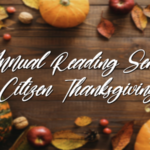In an age where digital devices dominate our attention, Thanksgiving offers a rare opportunity to reconnect via stories, traditions, and tangible memories. While cell phones promise instant communication, family heirlooms offer something deeper: a sense of belonging, continuity, and emotional resonance that no app or text can replicate. At the Thanksgiving table, heirlooms can become powerful tools for connection, grounding us in shared history and reminding us of the people and values that shaped us.
Unlike phones, which often isolate us in individual bubbles of scrolling and notifications, heirlooms invite communal storytelling. A grandmother’s embroidered tablecloth, a chipped gravy boat passed down from great-uncle Joe, or a faded recipe card in Aunt Ruth’s handwriting—these objects spark curiosity and conversation. They carry embedded narratives that unfold naturally around the table, encouraging younger generations to ask questions and elders to share memories. In this way, heirlooms become bridges between generations, fostering dialogue that’s richer than any group text.
Heirlooms are physical time machines. At Thanksgiving, when gratitude and reflection are central themes, these items remind us of the resilience, love, and quirks of those who came before. Unlike digital photos stored in the cloud, heirlooms demand presence—they’re meant to be held, examined, and passed hand to hand. This tactile experience deepens emotional engagement and creates shared rituals that phones simply can’t replicate.
Phones buzz with urgency, pulling us away from the present. Heirlooms, by contrast, slow us down. They invite ritual: polishing tarnished silverware, unfolding a hand-stitched tablecloth, reading aloud from a family recipe box. These acts create rhythm and meaning, reinforcing the idea that Thanksgiving is not just a meal, but a ceremony of remembrance and gratitude. When a teenager learns to carve the turkey using their grandfather’s special knife and carving apron, they’re not just participating—they’re inheriting a tradition.
While phones offer endless content, heirlooms offer curated, personal stories. A locket with a hidden photo, a war medal, or a handwritten letter can spark tales of migration, triumph, heartbreak, and humor. These stories are irreplaceable and deeply human. Sharing them at Thanksgiving transforms the gathering from a passive meal into an active celebration of identity. It’s not about disconnecting from technology entirely—it’s about choosing to connect more meaningfully.
This Thanksgiving, consider putting the phones aside—not out of obligation, but in favor of something more enduring. Let heirlooms take center stage. They don’t need charging, updates, or Wi-Fi. They carry the signal of love, legacy, and shared memory. In a world obsessed with connectivity, heirlooms remind us that the strongest connections are often the ones passed hand to hand and heart to heart.

Jill Shuman is a retired writer and librarian from Reading. She is an active member of several local senior initiatives, including Reading Friends of Seniors 60Plus and AARP Fraud Watch Network.
Image: GarlandFamily, CC BY-SA 4.0 https://creativecommons.org/licenses/by-sa/4.0, via Wikimedia Commons



